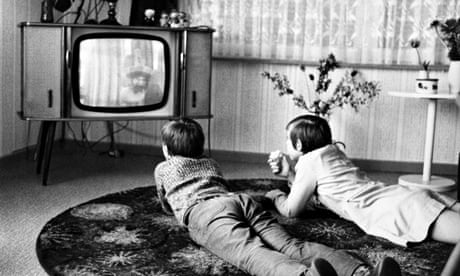Media consumption has changed beyond recognition over the past few years, with consumers now using multiple devices simultaneously to fit in over 11 hours of media and communications into less than nine hours each day. In 2015 there will be important opportunities for brands that can keep pace with the lifestyle habits of the modern consumer.
1. Linear TV ad planning will remain, but the technology will become more sophisticated
Traditional TV advertising is unlikely to change significantly in 2015, but planning and execution will become more advanced. Connected TVs and set-top boxes will offer TV advertisers more access to consumer profiles and invaluable viewing activity insights in real-time, which will enable advertisers to select ad content that is relevant, suitable and targeted to the user watching that particular TV at that exact moment.
TV advertising will become more automated as the rise of programmatic TV ad trading continues, resulting in improved viewer targeting offered by connected TVs and set-top boxes. A proliferation of platforms – such as Clypd and AudienceXpress – has already entered the marketplace to provide programmatic TV ad buying technology.
2. Integrated TV ad campaigns will come to the fore
TV consumption will change in 2015 as consumers increasingly watch on multiple devices and in various locations, instead of watching the family television.
TV is being increasingly watched online by consumers on desktops as well as via apps on mobile devices while on the move. In response to this, consumers will be able to watch with a newfound flexibility as TV viewing moves away from set timings and towards more on-demand and online offerings such as Netflix, Amazon Prime and YouTube. To help boost viewing figures, TV show “tasters” will be increasingly uploaded on to channels such as YouTube by production companies, reducing time constraints even further and enabling consumers to choose when they watch.
Almost half of all viewers now use a second screen while watching TV. This multitasking is expected to increase in 2015. This will require advertisers to adapt in order to recapture the distracted second-screeners.
With the blurring of linear TV boundaries, and rise of multitasking second-screen viewers, advertisers will move towards integrated campaigns where current silos of TV budget, online budget, video budget and mobile budget will merge to meet changing consumer behaviour and enable better targeting.
3. TV ad measurement metrics will drive continual campaign optimisation
To enable an understanding of what works and what doesn’t, brands will begin to combine TV and online metrics in 2015. TV ad measurement will start to become part of the wider measurement model for the multimedia advertising mix.
First, gross rating point (GRP), which currently measures the success of a traditional TV ad campaign, will also be used for online campaigns to bring linear TV attribution in line with online viewing attribution. Metrics from Nielsen OCR, comScore VCE and Active GRP have shown this move has already started.
Second, as more TV viewers visit brand websites on second screens within minutes of a TV ad airing, online metrics – such as visits, click-throughs and conversions – will begin to merge with television metrics to form a truly integrated campaign that can be measured holistically. Clients are already starting to shift budgets towards better performing elements of a campaign, such as TV creative, TV channel or time of day.
These are exciting times for advertisers and viewers alike, and as we head into 2015, it will be great to see more interactive, dynamic and immersive ads than ever before, both on the big screen and the second screen.
Andreas Schroeter is co-founder and COO at wywy
Read more stories like this:
Five brands leading the way in omni-channel marketing
How to create strong ad campaigns across multiple screens
To get weekly news analysis, job alerts and event notifications direct to your inbox, sign up free for Media Network membership.
All Guardian Media Network content is editorially independent except for pieces labelled “Brought to you by” – find out more here.

Comments (…)
Sign in or create your Guardian account to join the discussion